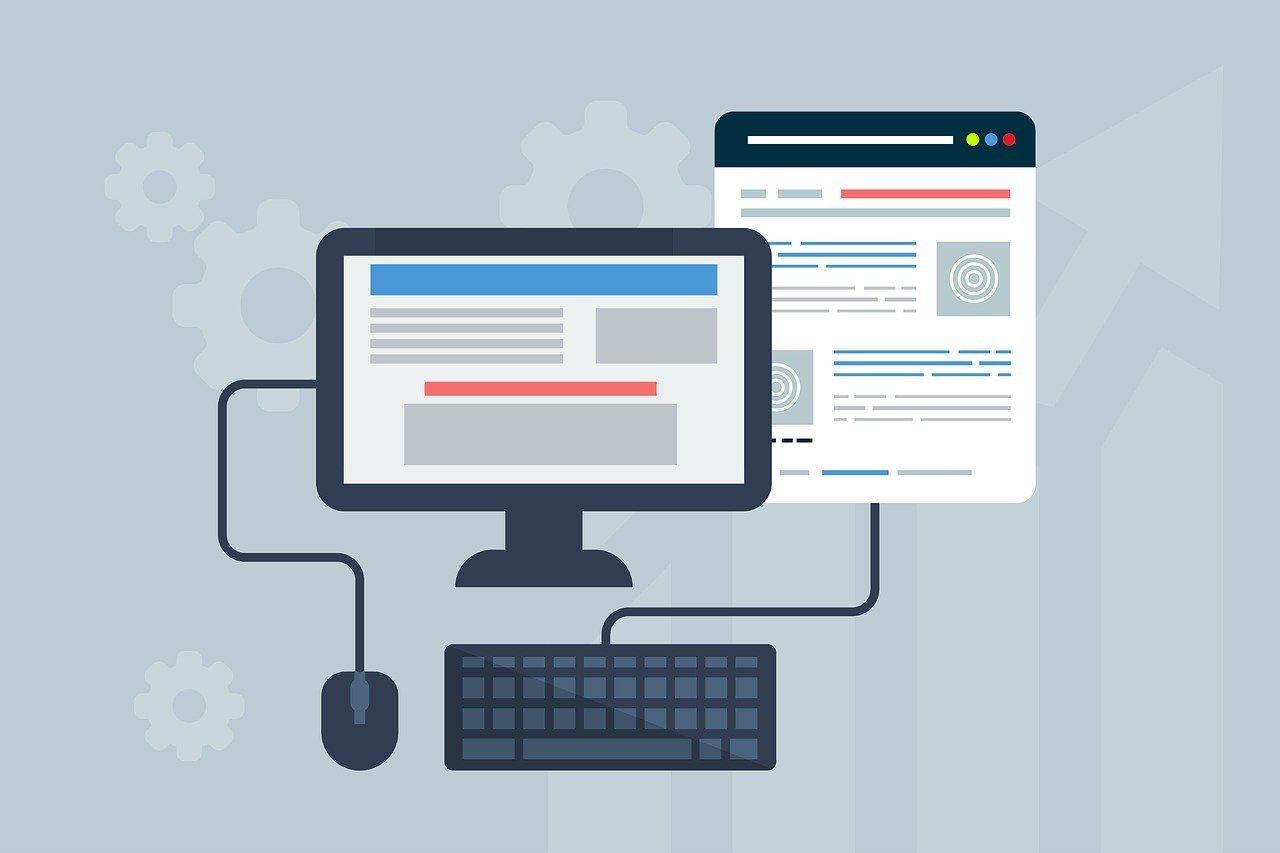Bubble shocked as an innovative platform which allows users to function intricate and large-scale web applications without coding. With this no-code development platform, anyone from an entrepreneur to a small business person can create apps from scratch without any coding skills at all. In this blog, we will discuss what Bubble is, how it functions, its primary functions, and various user groups that can benefit from the platform.
Understanding Bubble
The No-Code Paradigm
Bubble is a no-code development platform, it provides an interface where users can design and create web applications without learning to code. This approach creates opportunities for people who never thought they could design an application from scratch, being unfamiliar with coding languages. This approach opens up the world of app development to a broader audience, including those who may not have a background in programming.
What Sets Bubble Apart?
Bubble is not just a GUI tool that allows one to drag and drop to create web apps, it is a full-fledged platform that allows for both front and back development. It has many features for fine-tuning, good data handling, and varying hosting services. No matter if you’re developing an MVP or an entire web application, you’re going to find everything you need in Bubble.
How Bubble Works
Visual Editor
The face of Bubble is its visual editor at the core of its capability. This feature enables users to create the UI of their app through a graphical user interface where they can easily drag elements such as buttons, input boxes, images and many other components. The visual editor is as flexible as it can be, which allows the user to fine-tune the look and feel of the application.
Data Management
Bubble is particularly great with data. It enables users to develop and manage data structures on the platform. You can define the type of data, establish how the various pieces of data relate, and make requests to retrieve data. This comprehensive data management system is indeed essential for creating engaging, real-time Web applications.
Workflows
Workflows are the backbone of your app’s logic. In Bubble, workflows define how your app behaves in response to user interactions. Using a visual interface, you can set up actions and conditions that determine what happens when a user clicks a button, submits a form, or interacts with any other element in your app. This feature allows for complex functionality without writing code.
Hosting and Scalability
Bubble handles the hosting and scaling of your application. When your app is created, Bubble guarantees that it is open to individuals worldwide and can be hosted on their servers. Another thing is scaling, which means that your application will be scaled to accommodate more users and you won’t have to worry about the server.
Key Features and Benefits
No-Code Development
Bubble does not require any coding skills, allowing more people get into the business of building applications. This democratization of technology imply that anyone with an idea can implement it regardless of his background knowledge in programming languages.
Visual Interface
In the applications creation the drag and drop function is used which makes the work more easy. Users can also view their modifications real-time, which makes it convenient to design and perfect the look and feel of an app.
Full-Stack Capabilities
Bubble is unique because it provides both front end and back end development in one singular application. This means that you will not have to create new tools or new teams to address other aspects of the application. It is seamless and almost all processes are linked making the development cycle very efficient.
Scalability
This infrastructure architecture is scalable to accommodate larger user bases and escalating volumes of data. Whether your application has a few users or is quickly gaining popularity, Bubble’s hosting makes sure that your application is efficient.
Customization
Bubble allows for nearly full customization when it comes to the appearance and features of the app. Organizing views into categories, annotating templates and defining application-wide interactions are all in your hands.
Rapid Prototyping
Bubble offers to its users – the ability to rapidly experiment with app concepts. It encompasses that in the prior development cycles, they take time and a lot of money, but with Bubble, you can build and easily make changes quickly, hence improving the time to market.
Cost-Effective
Creating apps with the traditional write code approach can be time-consuming and expensive and demands experienced programmers. Bubble eliminates these costs by offering an environment in which users, who have no coding skills, can independently build applications.
Who Can Use Bubble?
Entrepreneurs and Startups
Bubble is particularly helpful for entrepreneurs and start-ups who seek to develop MVPs. Venture Capital provides you with an opportunity to experiment and prove the viability of the business concepts with little to no capital invested beforehand. After your concept has been tested and proven right, it is easy to build and expand your app within the same environment.
Small Businesses
Bubble can be used for building bespoke applications for that act as operational tools for small businesses and improve interactions with consumers. Whether it is for an in-house project as a workflow tool or a client-facing application, Bubble offers the versatility and capabilities required for businesses’ applications.
Non-Technical Users
One of Bubble’s primary strengths is its accessibility to non-technical users. Web application development is no longer exclusive to computer science students or those who have background programming. This creates a new opportunity for people and businesses that in the past had no means or resources to develop full-blown applications.
Students and Educators
The Bubble is also a convenient tool for students and teachers. It offers a realistic approach in learning about the development of applications and creating useful projects in education. With Bubble, students are able to apply practical knowledge in developing web applications, which will prove useful in current and future tech jobs.
Getting Started with Bubble
Setting Up Your Account
Bubble has a simple process of getting started with it. You can complete the registration process on their website and start developing your first application immediately. In addition, Bubble comes with a free plan that is ideal for testing and experiencing the features offered on the platform.
Exploring Templates
Bubble offers a variety of templates for you to use or modify to build your app from scratch. These templates are designed based on the different scenarios such as e-commerce site, the social network and so on which can help you to create components and optimized workflow.
Building Your First App
When building your first app, it’s essential to start with a clear idea of what you want to achieve. Start with text design in the visual editor, create your database, and describe your processes. Bubble provides users with a great deal of documentation and tutorials that can help in this process.
Testing and Iterating
After your app is launched to the market it is very important to evaluate it rigorously. When there is a problem, solve it by consulting Bubble’s debugging tools. Ensure you incorporate feedback from users and enhance the app continually to meet their needs.
Advanced Features
Plugins
Bubble offers many plugins that allow you to further enhance and customize your existing app. These plugins can extend the functionality, support third-party services, and improve the functionality of your application. For example, you can look at the plugins available in the Bubble marketplace and install them without any difficulties.
API Integrations
Bubble also supports external APIs. This feature allows your app to interact with other services, get information from other sources, and take actions that are outside the Bubble interface. API integration is essential in developing complex and connected applications that are embodied by rich features.
Custom Code
Bubble is a no-code application development platform, but it does offer an option to incorporate code if necessary. This flexibility allows you to add advanced functionality that may not be possible to build using the available features in Bubble. Custom code can be included by utilizing plugins or by editing the settings of your app.
Case Studies
Successful Apps Built with Bubble
Many successful apps have been built using Bubble. For example, Dividend Finance, which is an industry of renewable energy financing, employed Bubble to design its internal applications and interfaces for consumers. The no-code approach helped them focus on creating the right solutions at the right pace.
Testimonials from Bubble Users
Largely, users have commended Bubble for being very easy to use while offering very great functionality. There are several success stories that show that the platform helped a group of entrepreneurs, developers, and business people to bring their ideas to life without the usual hurdles of traditional development.
Read Also: All Best Tools for Testing Multiuser WebSocket Applications
Closing Words
Bubble is a revolutionizing force within the app building industry. It has no-code platform benefits to ensure that many people can use technology regardless of their technical background. As an entrepreneur in the process of building an MVP, a small business owner who wants to improve your operation, an Idea-oriented person without any coding experience, or even a student learning about app development, Bubble has everything you might need.
Using Bubble visual editor, powerful data management, smart workflows, and affordable hosting, you can implement web app ideas seamlessly and effectively. Huge numbers of choices for customization, rich features, and friendly community all add more values to this platform, which makes Bubble a great tool for creating serious apps.




